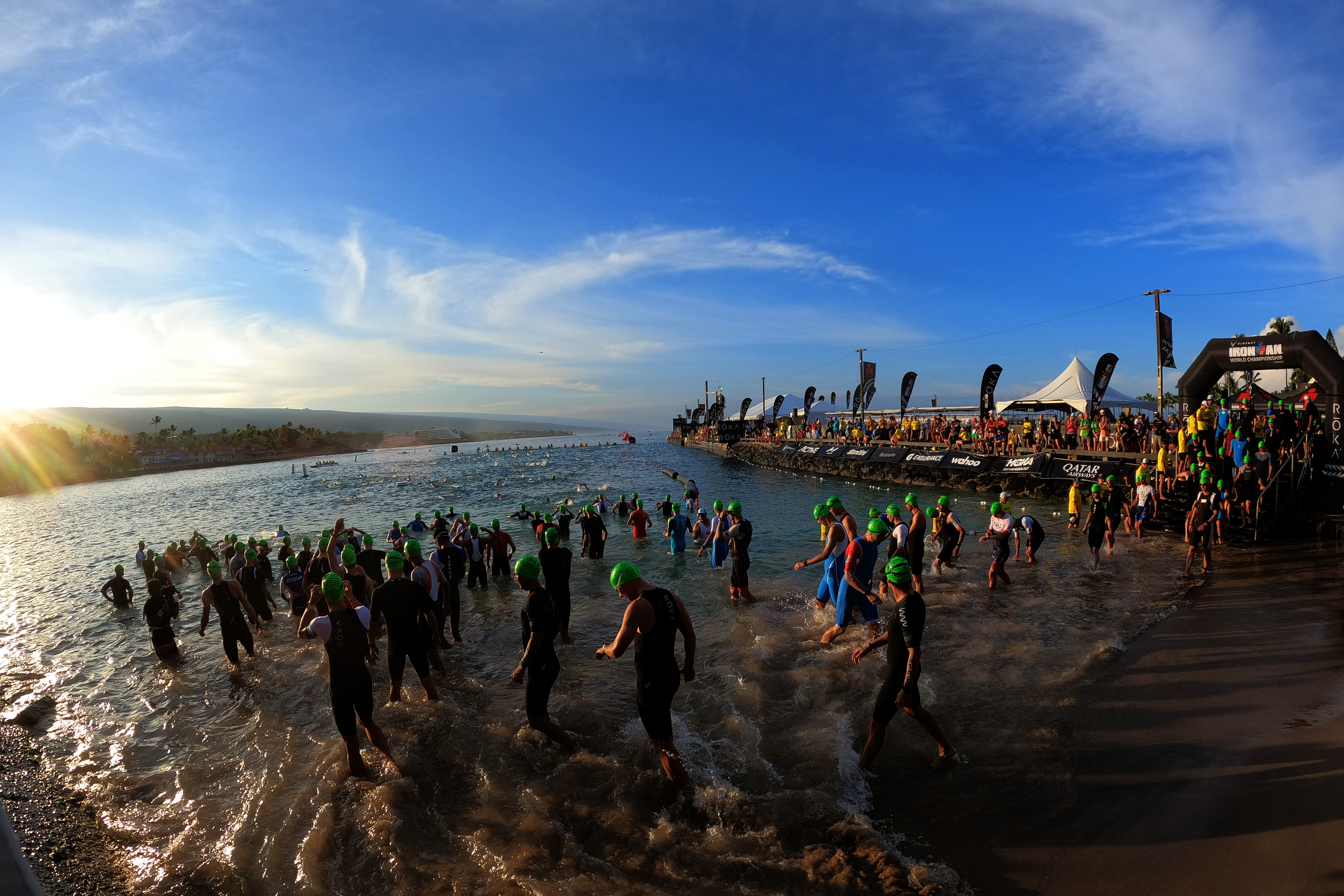Kona: Two days or too dazed?
After being on the ground to soak up the Ironman World Champs energy, Tim Heming reflects on a historic return to Hawaii and asks whether the two-day format really is sustainable

Everybody has a slightly different Kona experience, but what became abundantly clear from mine is that no matter how much the world changes this race ain’t leaving this Big Island anytime soon.
This was the Ironman machine in full effect, BIG BOLD BRANDING and generating more energy than the grumbling volcano on Mauna Loa that – with a prayer to the Hawaiian gods – doesn’t blow before I file this and jet out.
In so many ways – especially if you love triathlon – being in this bubble is intoxicating. The stars of long course – former and current – wander and mix freely; three-time champion Jan Frodeno even put in a shift volunteering at one of the aid stations.
A septagenarian who collared me on Ali’i Drive at 6am on the first morning had completed enough Ironmans to gain a legacy slot and was so excited he could have started his own brand of life elixir. He was also a massive Lucy Charles-Barclay fan.
Pushing £20k in your underpants
This is what people pay thousands of pounds to be immersed in and invest many thousand more to qualify for in the first place.
Some of it, of course, is ludicrous. In what other seaside resort would it be normal to push £20,000 worth of carbon fibre along the main strip in your underpants?
Those who want to complete jog in next to nothing along Ali’i Drive. Most who want to compete stay well away until race day.
But whatever your goal, the Aloha spirit is welcoming. ‘You Are An Ironman,’ says announcer Mike Reilly (for the last time here) whether you clock 7:40 or 16:59.
And yes 7:40! It’s been three years since we were last in Hawaii and looking at the times – particularly the men’s side – you might have thought it was a decade. The race seems to have moved on so much.
The pro races delivered different but groundbreaking stories that should reach beyond triathlon.
A first home winner in 26 years for mum Chelsea Sodaro, who gave birth 18 months ago. Ten men under 8hrs on the men’s side as the Norwegians made everyone raise their game.

But could the island handle it? In my last column, I looked at how the scarcity of accommodation had affected the price of an already costly trip.
With the same two-day format – this time exclusively women on Thursday, men on Saturday – already locked in for 2023, athletes will be numbering 5,000 and need a cast of thousands more to support.
There will always be people willing to cough up to be here. The cost may mean the standard drops among the amateurs, but that won’t be Ironman’s chief concern.
The shortage of volunteers will be. Ironman could make no secret of the fact as aid stations were more stretched out, volunteer shifts extended, and demand at breaking point come race day.
The lifeblood of Kona
More so than even the athletes, volunteers are the lifeblood of this event. Ironman has to walk the tightrope of people seeing value in the role and not exploitation. It’s a delicate ecosystem as sensitive as the endangered coral of Kailua Bay itself.
Then there are the locals. When the fanfare quietens and the M-Dot rolls out of town, what will they think? Anecdotally, not a lot, according to a resident – and volunteer – I spoke to between races.
She believed the island’s population was split 50-50 over embracing The Ironman – as they still call it – in previous years, but that more ill-feeling was felt as it encroached into the working week.
The complaint is both the disruption and (lack of) economic benefits that they don’t believe trickle down far enough.
Ironman tries to mitigate with donations to the local community and says its Foundation distributed $275,000 in “charitable giveback” to non-profit initiatives and groups in the Kailua-Kona community.
This may be an unwritten contract to get those community groups volunteering en masse at the event. Fair enough. It happens, but it may just have to happen some more moving forward.
After his final race here, I asked 2014 champion Sebastian Kienle how he’d like to be remembered, and he replied with simple eloquence as ‘someone who respected the island.‘
If Hawaii is going to continue to play host to a two-day world championships, that’s the yardstick by which Ironman’s entire organisation will be judged.
Top image credit: Tom Pennington/Getty Images for Ironman




